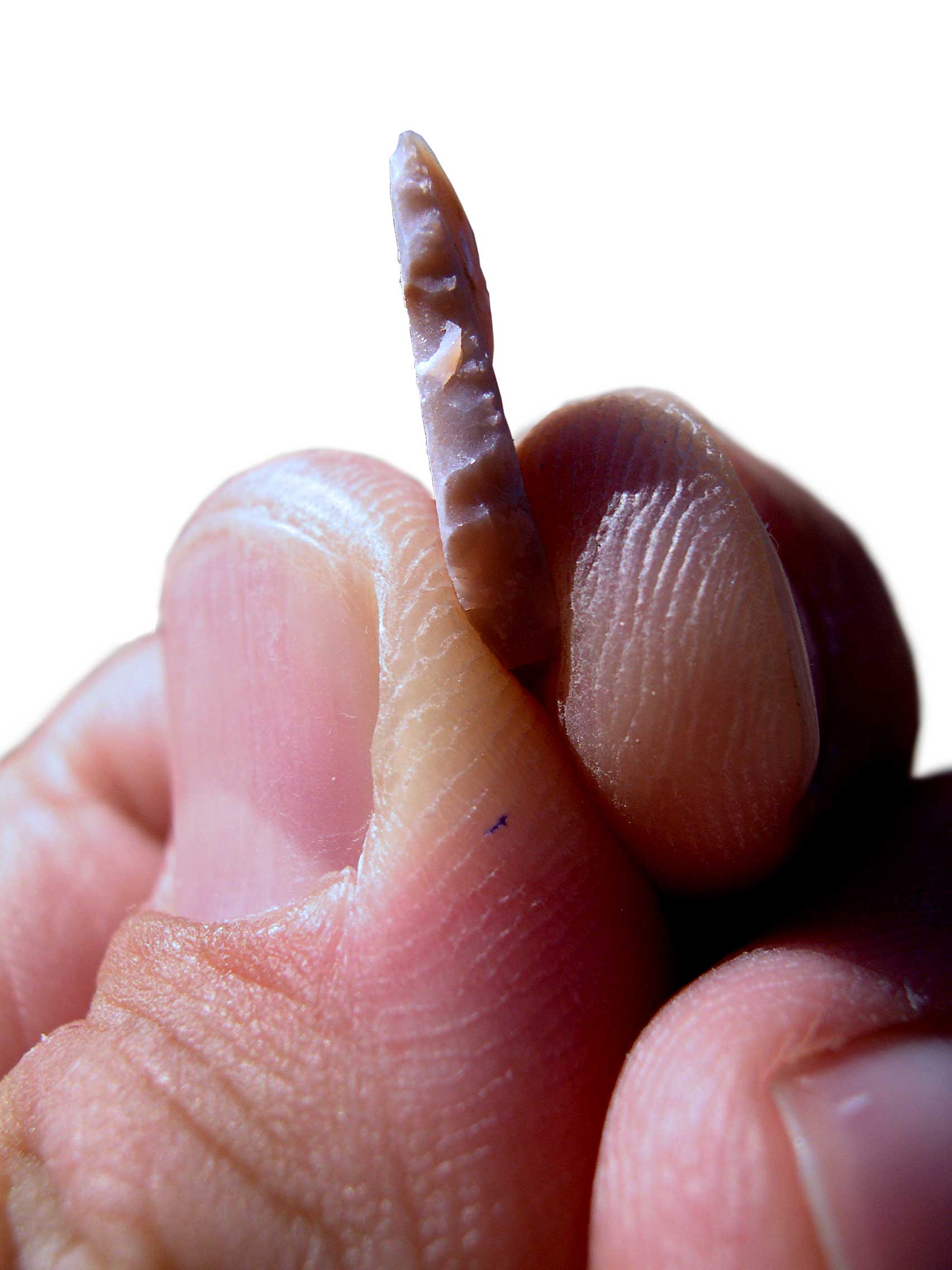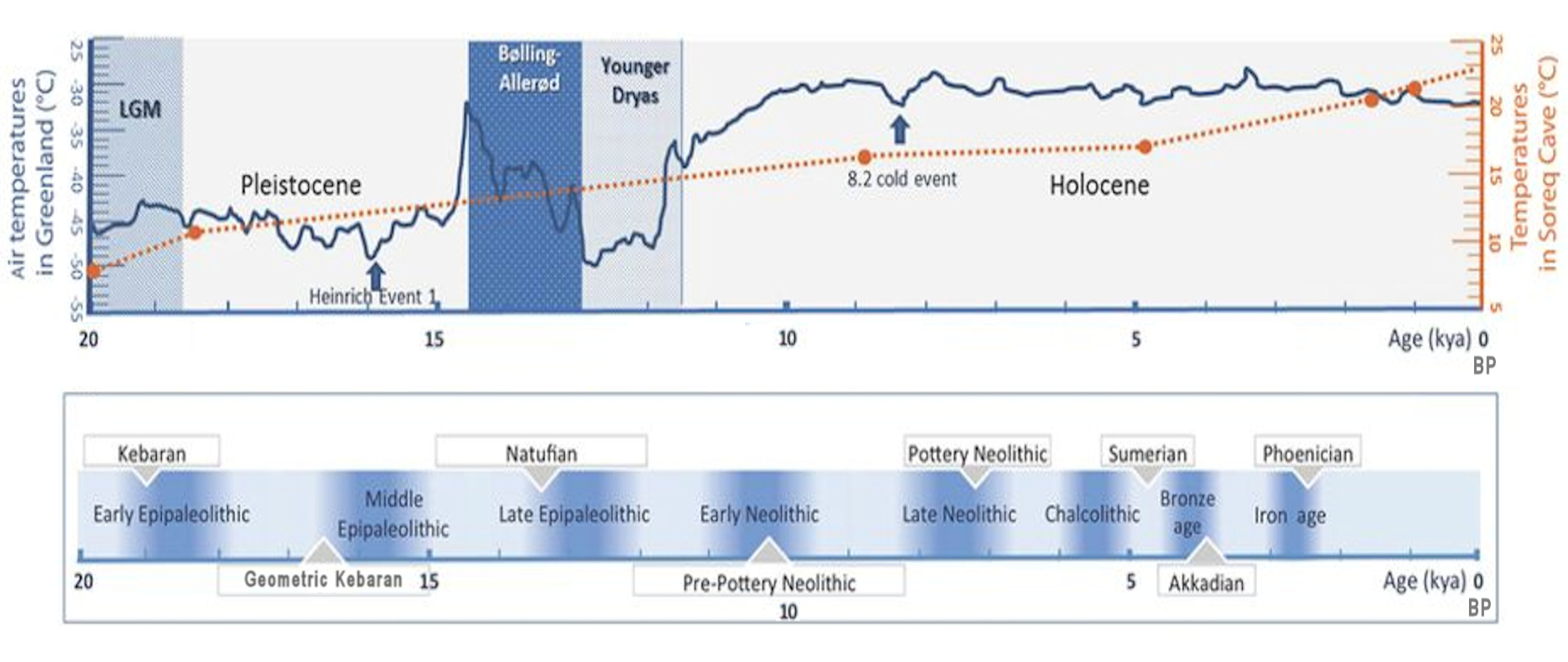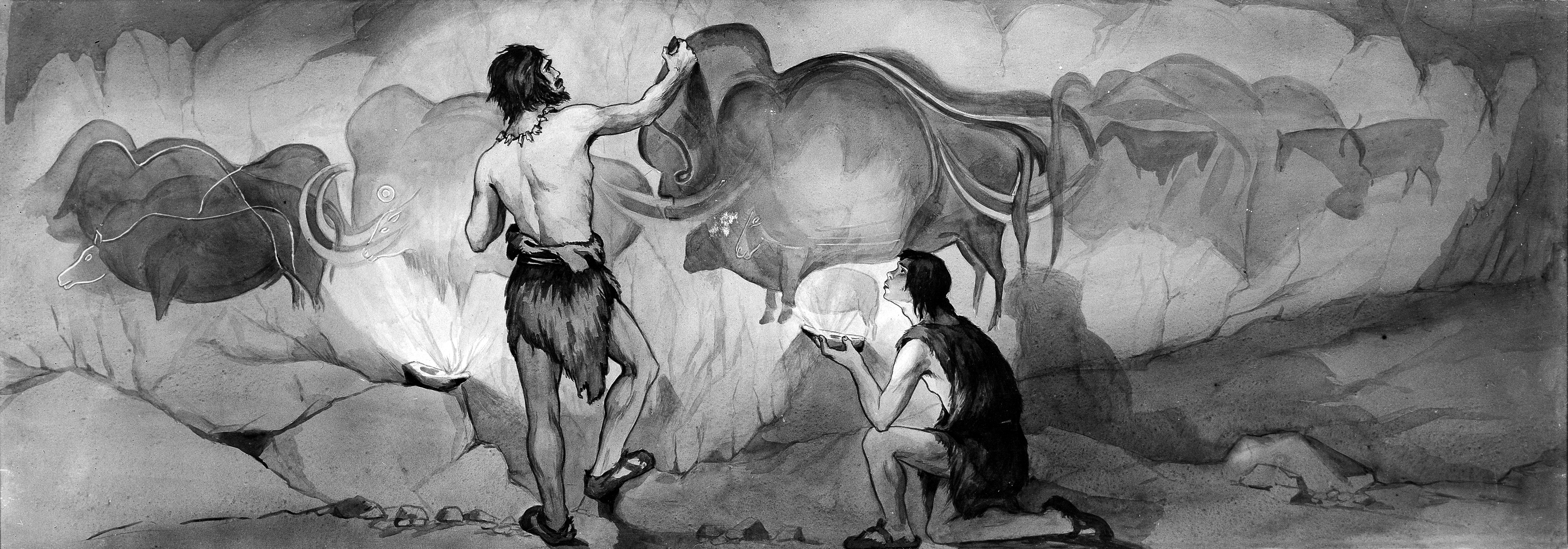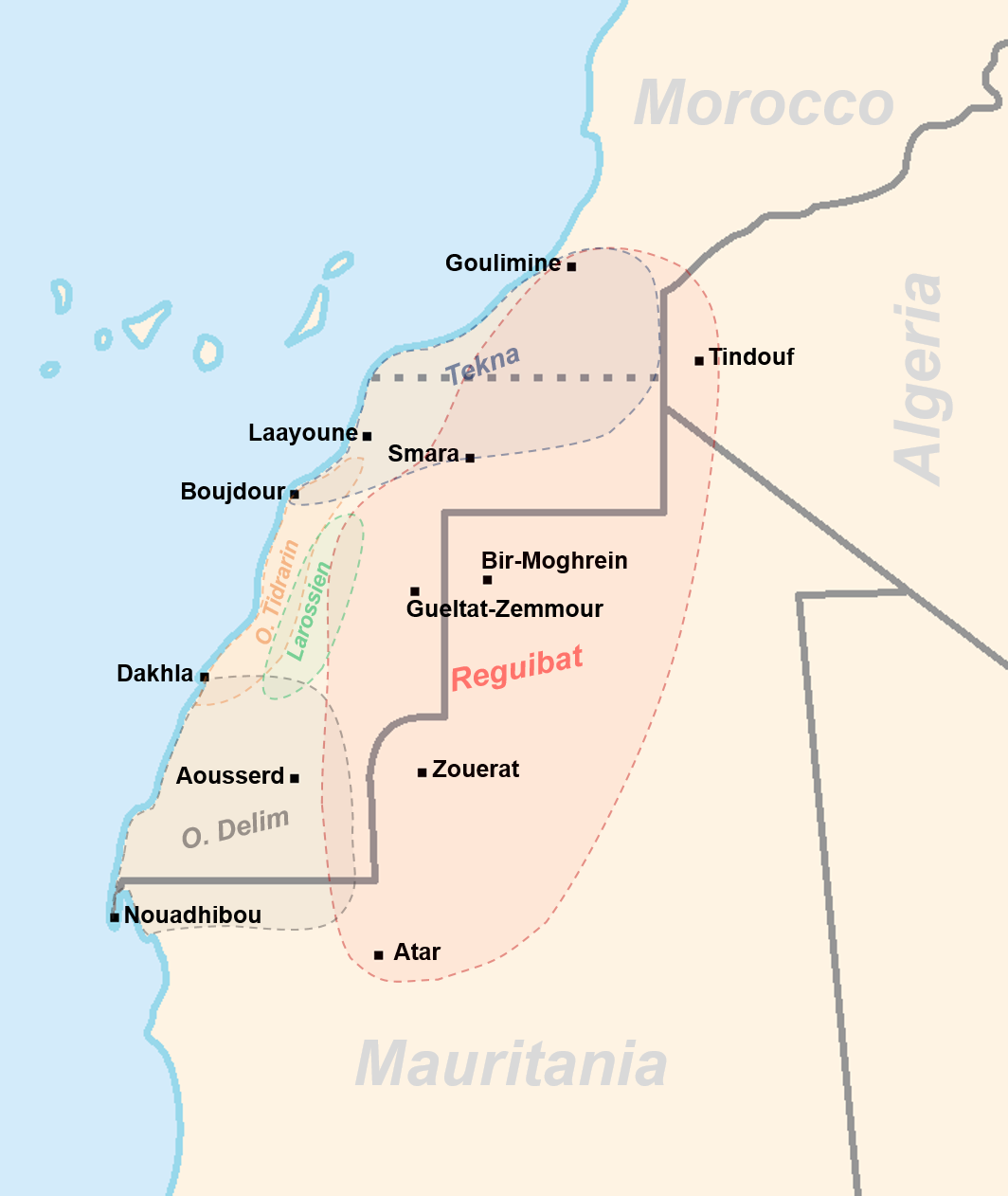|
Microliths
A microlith is a small Rock (geology), stone tool usually made of flint or chert and typically a centimetre or so in length and half a centimetre wide. They were made by humans from around 60,000 years ago, across Europe, Africa, Asia and Australia. The microliths were used in spear points and arrowheads. Microliths are produced from either a small blade (Microblade technology, microblade) or a larger blade-like piece of flint by abrupt or truncated retouch (lithics), retouching, which leaves a very typical piece of waste, called a microburin. The microliths themselves are sufficiently worked so as to be distinguishable from workshop waste or accidents. Two families of microliths are usually defined: laminar and geometric. An assemblage of microliths can be used to date an archeological site. Laminar microliths are slightly larger, and are associated with the end of the Upper Paleolithic and the beginning of the Epipaleolithic era; geometric microliths are characteristic of the M ... [...More Info...] [...Related Items...] OR: [Wikipedia] [Google] [Baidu] |
Kebaran Culture
The Kebaran culture, also known as the 'Early Near East Epipalaeolithic', is an archaeological culture of the Eastern Mediterranean dating to c. 23,000 to 15,000 Before Present (BP). Its type site is Kebara Cave, south of Haifa. The Kebaran was produced by a highly mobile nomadic population, composed of hunters and gatherers in the Levant and Sinai areas who used microlithic tools. Overview The Kebaran is the first phase of the Epipalaeolithic in the Levant. Kebaran stone tool assemblages are characterized by small, geometric microliths, and are thought to have lacked the specialized grinders and pounders found in later Near Eastern cultures. Small stone tools called microliths and retouched bladelets can be found for the first time. The microliths of this culture period differ greatly from the Aurignacian artifacts. The Kebaran is preceded by the final phase of the Upper Paleolithic Levantine Aurignacian (also known as the Athlitian or Antelian) and followed by the proto ... [...More Info...] [...Related Items...] OR: [Wikipedia] [Google] [Baidu] |
Microburin
A microburin is a characteristic waste product from manufacture of lithic tools — sometimes confused with an authentic burin — which is characteristic of the Mesolithic, but which has been recorded from the end of the Upper Paleolithic until the Chalcolithic. This type of lithic artifact was first named by Henri Breuil who defined it as "a type of angular, smooth, with a terminal retouch in the form of a small notch". Breuil initially thought that the microburins had a functional use as a type of microlithic burin. However, he later came to realize that the manufacturing technique was different from that of the burin and that they could be waste products from the manufacture of microliths, but they may have occasionally been reused for a useful purpose, which is expected for parsimonious lithic resource exploitation A microburin is a fragment of a lithic flake, or more precisely, of a lithic blade, that shows on its upper face the beginnings of a notch terminating in an obliq ... [...More Info...] [...Related Items...] OR: [Wikipedia] [Google] [Baidu] |
Magdalenian
Magdalenian cultures (also Madelenian; ) are later cultures of the Upper Paleolithic and Mesolithic in western Europe. They date from around 17,000 to 12,000 years before present. It is named after the type site of Abri de la Madeleine, a rock shelter () located in the Vézère valley of Tursac in Dordogne, France. Édouard Lartet and Henry Christy originally termed the period ''L'âge du renne'' "the age of the reindeer". They conducted the first archaeological excavation of the type site, publishing in 1875. The Magdalenian is associated with reindeer hunters. Magdalenian sites contain extensive evidence for the hunting of red deer, wild horses, and other megafauna present in Europe toward the end of the Last Glacial Period. The culture was geographically widespread, and later Magdalenian sites stretched from Portugal in the west to Poland in the east, and as far north as France, the Channel Islands, England, and Wales. Besides la Madeleine, the chief stations of the Ma ... [...More Info...] [...Related Items...] OR: [Wikipedia] [Google] [Baidu] |
"Noailles" Burin
Burin from the Upper Paleolithic (Gravettian) (ca. 29,000–22,000 BP) In archaeology and the field of lithic reduction, a burin (from the French ''burin'', meaning "cold chisel" or modern engraving burin) is a type of stone tool, a handheld lithic flake with a chisel-like edge which prehistoric humans used for carving or finishing wood or bone tools or weapons, and sometimes for engraving images. In archaeology, burin use is often associated with "burin spalls", which are a form of debitage created when toolmakers strike a small flake obliquely from the edge of the burin flake in order to form the graving edge. Documented use left, 180px, Carinated "burin"/microblade core with multiple facets Standardized burin usage is typical of the Middle Paleolithic and Upper Palaeolithic cultures in Europe, but archaeologists have also identified them in North American cultural assemblages, and in his book ''Early Man in China'', Jia Lanpo of Beijing University lists dihedral burin ... [...More Info...] [...Related Items...] OR: [Wikipedia] [Google] [Baidu] |
Prepared Core
The prepared-core technique is a means of producing stone tools by first preparing common stone cores into shapes that lend themselves to knapping off flakes that closely resemble the desired tool and require only minor touch-ups to be usable. In contrast to the production of core tools like handaxes, where cores themselves were the end product shaped and trimmed down by removal of flakes, in prepared-core technique large flakes are the product and the core is used to produce them. This shift made it faster and more resource-efficient, as multiple tools could be struck from a single piece of starting material. Prepared core preparation techniques are grouped under the label Mode 3 technology. The best-known prepared core reduction method is the Levallois technique Prepared core technology was likely invented independently multiple times at different locations. The regular use of Prepared core technology is associated with large-brained hominins such as ''Homo heidelbergensis ... [...More Info...] [...Related Items...] OR: [Wikipedia] [Google] [Baidu] |
Mesolithic
The Mesolithic (Ancient Greek language, Greek: μέσος, ''mesos'' 'middle' + λίθος, ''lithos'' 'stone') or Middle Stone Age is the Old World archaeological period between the Upper Paleolithic and the Neolithic. The term Epipaleolithic is often used synonymously, especially for outside northern Europe, and for the corresponding period in Epipaleolithic Near East, the Levant and Epipaleolithic Caucasus, Caucasus. The Mesolithic has different time spans in different parts of Eurasia. It refers to the final period of hunter-gatherer cultures in Europe and the Middle East, between the end of the Last Glacial Maximum and the Neolithic Revolution. In Europe it spans roughly 15,000 to 5,000 Before Present, BP; in the Middle East (the Epipalaeolithic Near East) roughly 20,000 to 10,000 Before Present, BP. The term is less used of areas farther east, and not at all beyond Eurasia and North Africa. The type of culture associated with the Mesolithic varies between areas, b ... [...More Info...] [...Related Items...] OR: [Wikipedia] [Google] [Baidu] |
Africa
Africa is the world's second-largest and second-most populous continent after Asia. At about 30.3 million km2 (11.7 million square miles) including adjacent islands, it covers 20% of Earth's land area and 6% of its total surface area.Sayre, April Pulley (1999), ''Africa'', Twenty-First Century Books. . With nearly billion people as of , it accounts for about of the world's human population. Demographics of Africa, Africa's population is the youngest among all the continents; the median age in 2012 was 19.7, when the worldwide median age was 30.4. Based on 2024 projections, Africa's population will exceed 3.8 billion people by 2100. Africa is the least wealthy inhabited continent per capita and second-least wealthy by total wealth, ahead of Oceania. Scholars have attributed this to different factors including Geography of Africa, geography, Climate of Africa, climate, corruption, Scramble for Africa, colonialism, the Cold War, and neocolonialism. Despite this lo ... [...More Info...] [...Related Items...] OR: [Wikipedia] [Google] [Baidu] |
Spear
A spear is a polearm consisting of a shaft, usually of wood, with a pointed head. The head may be simply the sharpened end of the shaft itself, as is the case with Fire hardening, fire hardened spears, or it may be made of a more durable material fastened to the shaft, such as bone, flint, obsidian, copper, bronze, iron, or steel. The most common design for hunting and/or warfare, since modern times has incorporated a metal spearhead shaped like a triangle, lozenge (shape), diamond, or Glossary of leaf morphology, leaf. The heads of fishing spears usually feature multiple sharp Tine (structural), points, with or without barbs. Spears can be divided into two broad categories: those designed for thrusting as a melee weapon (including weapons such as lances and Pike (weapon), pikes) and those designed for throwing as a ranged weapon (usually referred to as javelins). The spear has been used throughout human history as a weapon for hunting and/or fishing and for warfare. Along with ... [...More Info...] [...Related Items...] OR: [Wikipedia] [Google] [Baidu] |
Tardenoisian
The Tardenoisian (or Beuronian) is an archaeological culture of the Mesolithic/Epipaleolithic period from northern France and Belgium. Similar cultures are known further east in central Europe, parts of Britain. and west across Spain. It is named after the type site at Fère-en-Tardenois in the Tardenois region in France, where E. Taté first discovered its characteristic artifacts in 1885. Characteristic artifacts differ from earlier industries by the presence of geometric microliths, microburin, scalene triangles, trapezoids and chisel-ended arrowheads and small flint blades made by the pressure-technique. The term is also used for several microlithic industries and sites in northern Italy and Eastern Europe and to distinguish the northern French Tardenoisian sites from the Sauveterrian industry in southern France. The Tardenoisian followed the Ahrensburgian, with which it was paralleled, and lasted from about 9000 BC until 4000 BC (in Britain) in the Neolithic The N ... [...More Info...] [...Related Items...] OR: [Wikipedia] [Google] [Baidu] |
Ibero-Maurusian
The Iberomaurusian is a backed bladelet lithic industry found near the coasts of Morocco, Algeria, and Tunisia. It is also known from a single major site in Libya, the Haua Fteah, where the industry is known as the Eastern Oranian.The "Western Oranian" would refer to the Iberomaurusian in Morocco, Algeria, and Tunisia, but this expression is seldom used. The Iberomaurusian seems to have appeared around the time of the Last Glacial Maximum (LGM), somewhere between c. 25,000 and 23,000 cal BP. It would have lasted until the early Holocene, c. 11,000 cal BP. The name "Iberomaurusian" means "of Iberia and Mauretania", the latter being a Latin name for northwest Africa. Paul Maurice Pallary (1909) coined this termPallary, P., 1909. Instructions pour la recherche préhistorique dans le Nord-Ouest de l'Afrique, Algiers. to describe assemblages from the site of La Mouillah in the belief that the industry extended over the strait of Gibraltar into the Iberian Peninsula. This theory i ... [...More Info...] [...Related Items...] OR: [Wikipedia] [Google] [Baidu] |
Sahrawi People
The Sahrawis, or Sahrawi people ( '), are an ethnic group native to the western part of the Sahara desert, which includes the Western Sahara, southern Morocco, much of Mauritania, and along the southwestern border of Algeria. They are of mixed Hassani Arab and Sanhaji Berber descent, as well as West African and other indigenous populations. As with most peoples living in the Sahara, the Sahrawi culture is a mix of Arab and indigenous African elements. Sahrawis are composed of many tribes and are largely speakers of the Hassaniya dialect of Arabic. Etymology The Arabic word ' () literally means "Inhabitant of the Desert". The word ''Sahrawi'' is derived from the Arabic word ' (), meaning "desert". A man is called a Sahrawi, and a woman is called a Sahrawiya. In other languages it is pronounced in similar or different ways: * Berber: ''Aseḥrawi'' or ''Aneẓrofan'' * English: ''Sahrawi'' or ''Saharawi'' * Spanish: ''Saharaui'' (''saharauita'', ''saharauiya'') * Fr ... [...More Info...] [...Related Items...] OR: [Wikipedia] [Google] [Baidu] |








